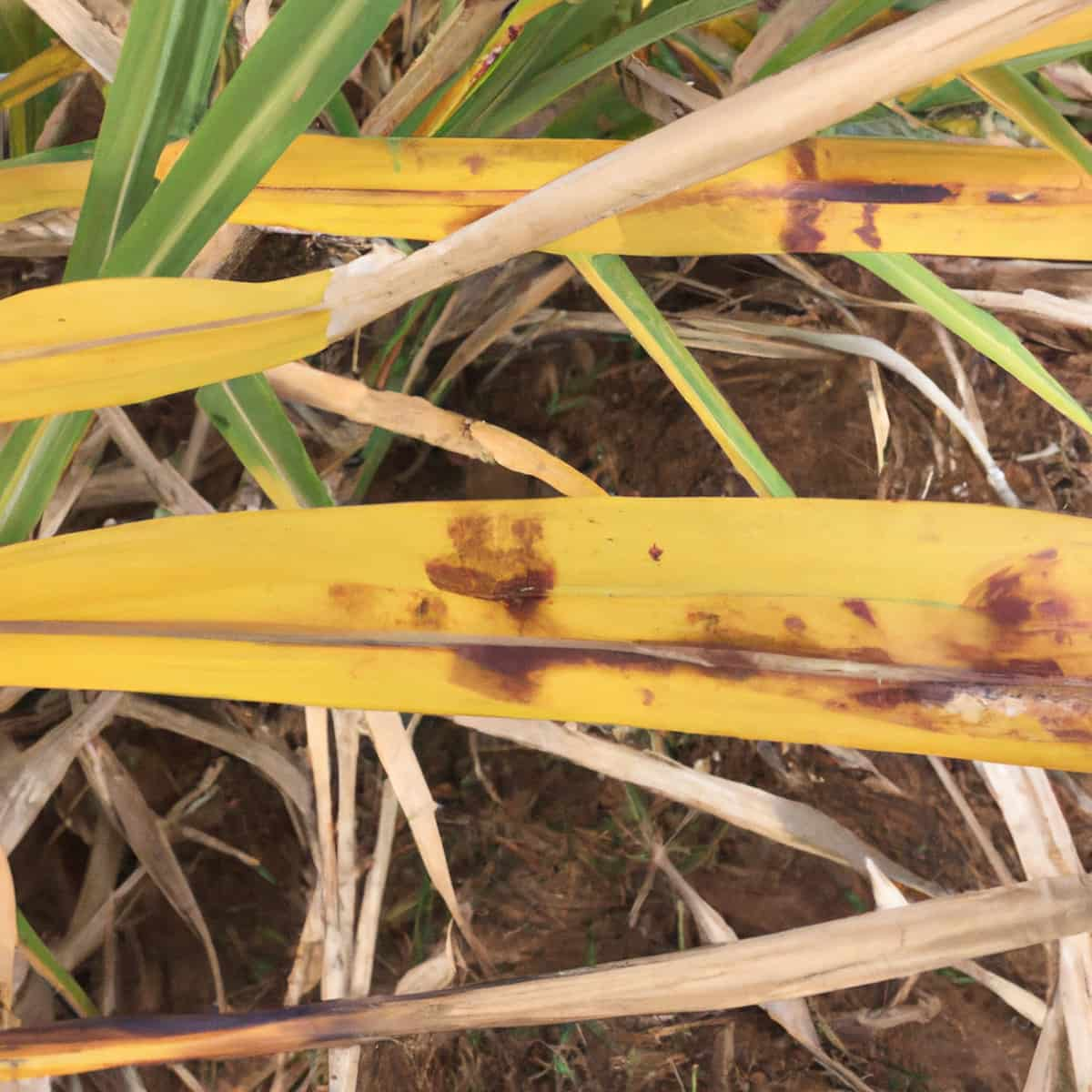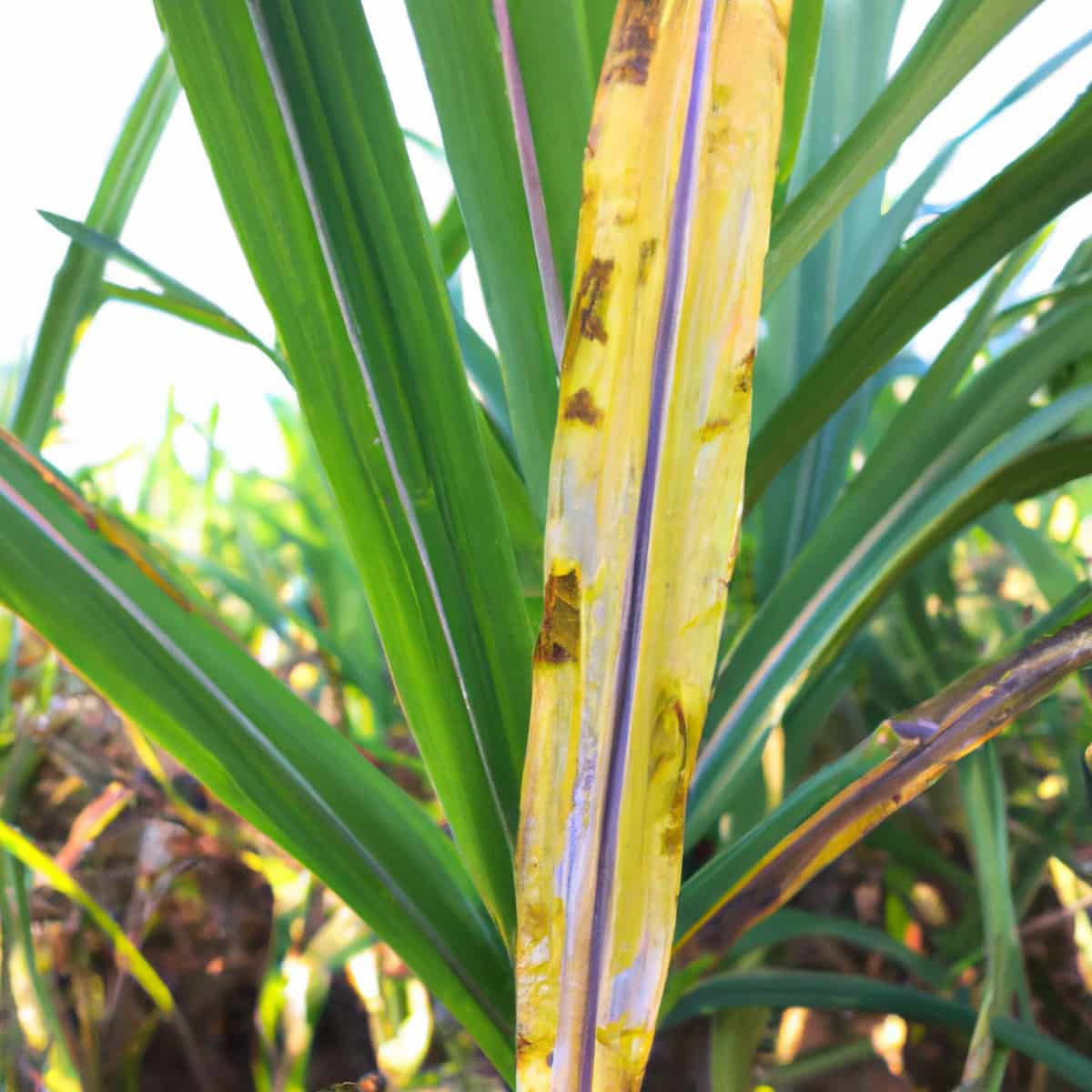The Sugarcane yellow leaf virus (ScYLV), a Polerovirus, Luteoviridae, is an important risk to sugarcane production worldwide because it causes Yellow Leaf Disease (YLD). In severe instances, YLD reduces cane productivity by up to 50 percent and juice yield by 40 to 50 percent. In India, YLD was identified for the first time in the late 1990s, and by 2005, it had become an epidemic in many states.

ScYLV and other viruses and bacteria that infect sugarcane are responsible for varietal degeneration, which reduces the yield potential of subsequent vegetative generations or ratoons. The virus spreads to the field via infected setts. The sugarcane aphid, Melanaphis sacchari, is the insect vector that transmits the virus between plants in the field. It is necessary to implement effective management strategies, such as chemical, biological, natural, and organic control measures, to reduce the impact of YLD on sugarcane production.
Yellow Leaf Disease Management in Sugarcane
The Causal Organisms of Yellow Leaf Disease Disease
Yellow Leaf Disease (YLD) is caused by the Sugarcane yellow leaf virus (ScYLV), a member of the family Luteoviridae. The virus is transmitted by aphids, specifically Melanaphis sacchari and Rhopalosiphum maidis, in a semi-persistent manner. Once the virus enters the plant, it localizes within the phloem cells, resulting in systemic accumulation of the virus at a high titer, ultimately reducing the vigor of the subsequent vegetative generations or ratoons.
The Disease Cycle of Yellow Leaf Disease Disease
Yellow Leaf Disease (YLD) in sugarcane is predominantly transmitted by aphids, specifically Melanaphis sacchari and Rhopalosiphum maximum, via the Sugarcane yellow leaf virus (ScYLV). Additionally, the virus can be transmitted via infected seed cane. Conditions of dry weather begin in October and continue until harvest in March.
Causes/conditions Favorable for Yellow Leaf Disease Disease in the Field
Yellow Leaf Disease (YLD) in sugarcane is transmitted predominantly through infected seed canes and not by mechanical methods. Other susceptible commodities include wheat, barley, sorghum, and oats, but they are only affected when sugarcane is grown nearby. The disease is most apparent in mature cane during arid weather conditions up until the end of harvest. YLD can cause significant yield losses in sugarcane plantations.
Symptoms of Yellow Leaf Disease Disease
- Yellowing of the midrib and adjacent laminar region, followed by midrib withering, in the top three to five leaves.
- Reddish discoloration may also be observed, and, in extreme cases, spindle and leaf dehydration.
- From October until the end of the harvest season in March, cane yellowing is most prevalent and obvious.
- The yellowing first appears on the third to sixth leaves counted down from the expanding upper leaf.
- As the season progresses, yellowing spreads from the leaf midrib into the leaf blade until a general yellowing of the foliage is visible from a distance.
- A severe infection can cause stunted cane growth and a bushy appearance.
- Similar symptoms can also be caused by plant stress, insect damage, and water deficiency.
Percentage of the Yield Loss Due to Yellow Leaf Disease Disease in Sugarcane
Yellow Leaf Disease has become an increasing epidemic in India’s sugarcane-growing states. In extreme instances, the disease reduces cane productivity by up to 50 percent and reduces juice yield by between 40 and 50 percent. Other viruses that cause mosaic and bacteria that cause ratoon stunting disease also contribute to the degeneration of sugarcane varieties in the field. The disease causes substantial losses in the sugarcane industry, prompting the implementation of effective management strategies.
In case you missed it: Grassy Shoot Management in Sugarcane: Disease Symptoms, Identification, Treatment, Chemical, Biological, Natural, and Organic Control

Yellow Leaf Disease Management in Sugarcane by Cultural Method
Sugarcane Yellow Leaf Disease can be managed successfully through cultural methods. To prevent the spread of the disease, it is advised to utilize wholesome seed cane and maintain field hygiene. In addition, proper nutritional management and resistant varieties can reduce the incidence and severity of the disease significantly. These cultural practices are cost-effective and environmentally friendly, making them desirable for growers.
Yellow Leaf Disease Management in Sugarcane by Biological Method
Sugarcane Yellow Leaf Disease, biological control methods are still in the experimental phase. Several studies have demonstrated the efficacy of using Bacillus subtilis and Trichoderma harzianum as biocontrol agents. Another method is utilizing RNA interference technology to target the virus and reduce its replication. However, additional research is required to ascertain the field effectiveness of these methods.
Yellow Leaf Disease Management in Sugarcane by Chemical Method
Chemical control can prevent insect vectors from transmitting Yellow Leaf Disease again. Malathion and Dimecron are two compounds that can be used to control the virus-spreading aphid population. Two applications of malathion at a rate of 1.5 kg/ha should be applied at a monthly interval following the removal of dead foliage. Carbofuran, another chemical, can be applied to the soil at 2 kg per hectare. Chemical control must be combined with preventative measures and biological treatments if available.
Yellow Leaf Disease Management in Sugarcane by Organic/Natural Method
Controlling aphid populations, which transmit Yellow Leaf Disease in sugarcane, is the focus of organic/natural methods for managing Yellow Leaf Disease. If aphids are discovered, insecticidal soap, neem oil, or organic products containing pyrethroids can treat the affected leaves. In addition, natural aphid predators may be introduced as a form of biological control.
In case you missed it: Ratoon Stunting Management in Sugarcane: Symptoms, Identification, Treatment, Chemical, Biological, Natural, and Organic Control

Preventive Measures for Control of Yellow Leaf Disease Disease
Farmers should use healthy seed material and, if possible, resistant varieties to prevent Yellow Leaf Disease. Starting in a nursery and then transplanting to the field can also aid in disease prevention. Yellow adhesive traps can control aphid vectors, and regular leaf removal can prevent aphid colonization.
Conclusion
Yellow Leaf Disease is a major danger to global sugarcane production. The disease can be prevented by correctly identifying symptoms, using healthy seed cane, maintaining field hygiene, and applying appropriate nutritional management. Chemical, biological, natural, and organic methods can be utilized for aphid population control and disease management.
- Beneficial Insects in Pest Management
- Natural Solutions for Pest Control in Flower Gardens
- Types of Fungicides Used in Agriculture
- Common Issues in the Fruit Development Stage of Pomegranate Farming
- Fruit Development Issues in Papaya: Easy Solutions and Treatment
- Soil-Borne Diseases and How to Protect Your Plants
- Practices to Prevent Disease Spread in the Garden
- From Wilted to Thriving: How to Treat Root Rot Naturally in Houseplants
- Natural Remedies to Cure Brown Spots on Fig Tree Leaves